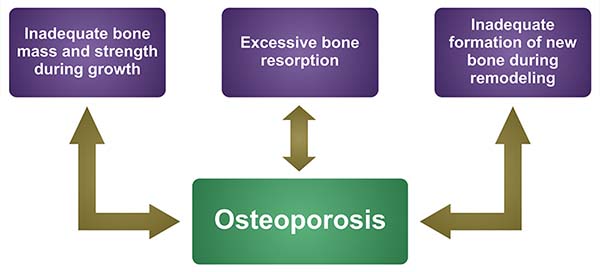The underlying mechanism in all cases of Osteoporosis is an imbalance between bone resorption and bone formation. Resorption is the process in which the complex structure of the bone is broken down to release calcium into the blood.
Bones lose the mineral calcium in Osteoporosis. Density of bones gets reduced leading to easy, painless fractures that can be complete or partial. Commonest sites are wrist, hip and spine.
The Cascade effect is a common phenomenon seen in Osteoporosis wherein one fracture leads to many fractures.
Even the simplest of activity like sneezing or bumping into furniture may lead to grave fractures. Moreover, you have no idea that your bones are becoming weak, hence the damage silent but intense. It can also affect posture causing you to stoop. It is hence also known as the "silent disease".
















